Kato Viannos is a village and the seat of the namesake community in the municipality of Viannos, in the Heraklion regional unit, on the island of Crete, Greece. It is located in the southern foothills of Mount Dikti. The inhabitants are mainly engaged in olive cultivation. Today, the vast majority of the residents are over 65 years old.
Historical Data and Churches
Kato Viannos is mentioned in 1583 under the name Viannes Catto, in the relevant census of Kastrofylakas (K 97). When it became a community, the settlement1 of Messi (Μέση) , which is located at an altitude of 540 m, was placed under it. The residents of Mesi originate from the Lasithi Plateau. The village is inhabited by a few farmers. In Mesi, there is the church of the Prophet Elias and the Three Hierarchs, which was built relatively recently.
The main church in Kato Viannos is dedicated to the memory of Agios Georgios (Saint George). Also of interest is the church of the Presentation of the Virgin Mary, which has a wood-carved iconostasis. Near the village is the old church of the Transfiguration of the Savior, with frescoes.
During the2 period of Ottoman rule, the settlement of Pera Mesi existed, where the chapel of the Virgin Mary is located. There, during a wedding, the Turks invaded and killed everyone who was celebrating, after being tipped off by a small child. They also destroyed the settlement. Ruins remain from the former settlement.
The name Mesi probably comes from the fact that the residents who founded the village had started from Tympaki and others from Sitia, and as a result, they met in the middle, where the current settlement is located, in the south of the Heraklion regional unit.
Presidents of the Community
After the liberation from the Turks and in the first administrative organization of the island, the village was represented, in the Municipality of Viannos to which it belonged, by Dimitrios Doulgerakis as a special assessor and later the first elected councilor Emmanouil Vavourakanakis. Presidents of the community in the last 70 years have been:
- Charilaos Vavourakanis
- Nikolaos Mandalakis
- Georgios Vavourakanis (Maragos)
- Emmanouil Vasilakis
- Theodoros (Thodoris) Tzanakis
- Ioannis (Giannakis) Doulgerakis
- Georgios (Lemonatzis) Tzanakis
- Ioannis (Avgiotis) Meramvelliotakis
- Michail (Tagmatarchis) Miliaras
- Georgios Zabetakis who was also the last president of the community.
This was followed by the merger of the communities into the Municipality of Viannos. After 1999 the village was represented in the Municipality of Viannos by:
- Ioannis Miliaras (Tsakas) for 3 four-year terms and then
- Emmanouil Stamatoulakis, the current local representative.
Secretaries of the community were:
- Georgios (Grammatikos) Tzanakis from 1945 until 1981 when he retired.
- After 1981 until 1988 Anna Angouraki
- From 1988 Ioannis Meramvelliotakis who moved to the Municipality of Viannos after the abolition of the communities and still serves.
The Holocaust of Viannos
In the province of Viannos, in the southeastern part of the Heraklion regional unit, a strong resistance organization was created, with the universal participation of the population, from the first days of the Nazi occupation, in June 1941. The dynamic presence of a group of partisans in the mountains of Viannos from January 1943 forced the Germans to maintain strong military forces in Crete, weakening other fronts. On September 8-9, 1943, the partisans neutralized a German outpost that had been established in the village closest to the lair of the partisans, Kato Symi. On September 12, in a battle between a German military unit and a detachment of partisans at the entrance to the village of Kato Symi, the Germans suffered heavy losses in dead, wounded, and 12 prisoners.
The German general, commander of the Fortress of Crete, Müller, in his order to the military forces that were sent to Viannos, states: Destroy the province of Viannos, immediately execute, without process, the males who are over 16 years old and all those who are arrested in the countryside regardless of gender and age. Reprisals against the civilian population followed. In the mass executions, which took place from September 14 to 16, 401 residents of the area lost their lives and 980 residences in 10 villages were destroyed. There are dozens of places where the mass executions took place in the villages and rural areas of the Province of Viannos and in the neighboring Province of Ierapetra.
In the terrible hour of trial, the patriots, led to execution, showed the greatness of their souls and their strength. No one bent, no one cried, no one begged. They all accepted the reaping volleys with the courage and pride that characterizes the Cretan soul. All of them simply and calmly, as befits true brave men, received the murderous bullets in the chest, shouting for the country and freedom. Of those who survived, the only witnesses of those tragic moments, no one reported a case of faint-heartedness. On the contrary, they reported cases of several who reacted and fell dead after a fight with their killers.
Characteristic are the cases of:
- Vasilis Pnevmatikakis in Vachos
- Apostolos Vardakis in Agios Vasilios (Saint Basil) in the attack they made on their killers.
- Encouraging words and cheers for the country of Iraklis Pnevmatikakis in Vachos
- Nikos Tsagkarakis, Manolis Baritakis and Nikos Mathioudakis in Amira
- Stathis Mastoras in Agios Vasilios who sang the National Anthem
- The words “Courage, dad, we are dying for the country” of the 17-year-old student Maria Papadimitropoulou to her father, whom she saw crying because he was thinking about the loss of his daughter.
One testimony, however, which was found and recorded by the historian of that time Giannis Mourelos in his work “History of Crete” tells us a lot. He writes: As eyewitnesses assured me, a German reserve officer, while in a cheerful mood from the wine he was drinking with them, began to say: I have attended many executions in other countries that we have conquered. But what I encountered in the villages of Viannos I have not seen anywhere. Men and women faced death calmly and proudly placed their bodies in front of the barrels of guns. Not one of them cried, not one of them asked for pity or mercy. But what impressed me the most was an eighty-year-old in a village in Viannos. He was in the middle, in the line of men we were going to execute. He asked to say something to the officer. I approached with an interpreter. He came out of the line and taking off his ring he offered it to me saying: “Take this ring. I give it to you, so that you will remember all your life that you killed an innocent 80-year-old man.” Then the old man returned calmly to his line trying to lift his old body, as much as his years allowed him. I was taken aback and a few seconds passed until I found the composure to remember the order I had received. And yet the moment I said “fire” I was trembling. I will never forget that tragic moment.
Another German also confesses it for the Cretans. General André, commander of the Fortress of Crete, who bloodied Crete with the hundreds of executions he ordered in many villages of Crete, told the Swedish representative of the International Red Cross when he visited him: The Cretans, when they are in front of the firing squad they have something mythical about them. They are so proud at that tragic hour of death, that it is impossible not to admire them. And there are many incidents that show the bravery, the courage, and the true heroism of the heroes of September 14th in the face of death.
But there are many, on the other hand, barbaric and inhuman manifestations of the Germans in those days:
- The murder with a bayonet of the Vardakis brothers in Agios Vasilios
- The torture during the execution of Vervelakis’ children
- The disembowelment of the pregnant Aikaterini Papadimitropoulou in Lygia
- The murder of Syngelaki with her little boy in her arms in Loutraki
- The murder of the Papadakis brothers in Pano Symi with their disabled mother in their arms
- The execution of the disabled Georgios Kontakis with a bayonet in Kefalovrysi
- The execution of the six-year-old boy (Symvoulakis) in his father’s arms in Lygia and many others that did not become known.
On September 17, the mass executions stopped.
- Old lady Syngelakaina in Amira mourned her husband and four sons.
- The Verykokakis family mourned 17 of its members
- The Raptakis family 12 blood relatives and 10 sons-in-law
- The Iliakis family 10 brothers and cousins
- Three brothers Vasilakis
- Maria Chalkiadaki lost her husband, her father-in-law, her brother-in-law, two first uncles and six first cousins.
- Matthaios Christakis or Syllas stood in line with his two sons and four sons-in-law.
- Chatzakaina in Agios Vasilios lost her husband, her son and her son-in-law.
- Killed in the fields of Loutraki, Zacharnia Rinaki with her 6-month-old baby in her arms hanging on her breast and next to her, her mother and her mother-in-law were also killed.
- The Dimitriankis family from Gdochia also mourned five dead.
- Dozens of houses with two dead.
- Dozens of families who mourned ten, fifteen and twenty dead, spouses, parents, siblings and cousins.
The dead in the villages of Viannos and Ierapetra reached 401 in the three fateful days of 1943, to reach 461 together with those who were killed throughout the occupation. 8 months old was the youngest, unborn, in his mother’s womb, 96 years old was the oldest (Emm. Daskalakis from Amira) 127 were over 60 years old. Of them:
- 60 were from 60 to 69 years old
- 47 were from 70 to 79 years old
- 16 were from 80 to 89 years old
- 3 were 90, 93 and 96 years old
- 20 were women.
Most were farmers, but also ranchers, professionals and reserve officers. Among them 2 clerics, 5 teachers, 1 professor, 1 lawyer and 1 employee of the Hellenic Telecommunications Organization. The Holocaust of Viannos, the atrocities of the Nazis, remain unknown events to the wider public, in Greece and internationally. Even in Germany, few are aware of it, and these are limited to the few tourists who in recent years have been visiting the Heroon, recording their feelings in the book kept there.
Settlement: Key Points
- Kato Viannos is located in the southern foothills of Mount Dikti, in the Heraklion regional unit, on the island of Crete, Greece.
- It is mentioned in 1583 under the name Viannes Catto.
- During the Ottoman rule, the settlement of Pera Mesi existed near Kato Viannos.
- The main church in Kato Viannos is dedicated to the memory of Agios Georgios (Saint George).
- The village was burned by the Germans on September 14-16, 1943.
Population Data
Year |
Population |
Notes |
|---|---|---|
1583 |
254 |
Viannes Catto |
1881 |
307 |
164 Christians, 143 Muslims |
1900 |
241 |
|
1928 |
332 |
|
1940 |
363 |
|
1951 |
325 |
|
1961 |
307 |
|
1971 |
258 |
|
1981 |
208 |
|
1991 |
180 |
|
2001 |
146 |
|
2011 |
108 |
|
2021 |
112 |
References
Access
Kato Viannos is 15.8 kilometers away from Arkalochori and 2.2 kilometers away from Ano Viannos













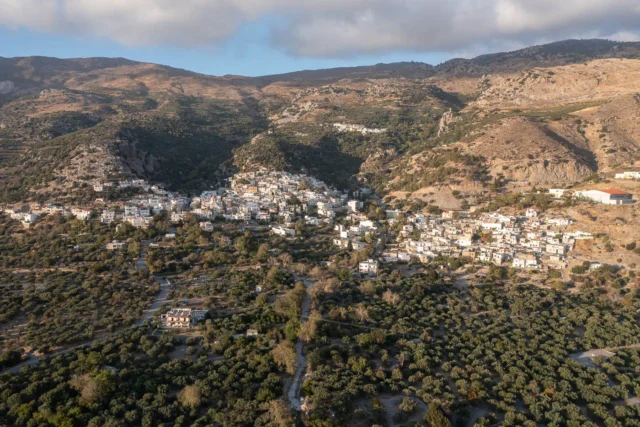
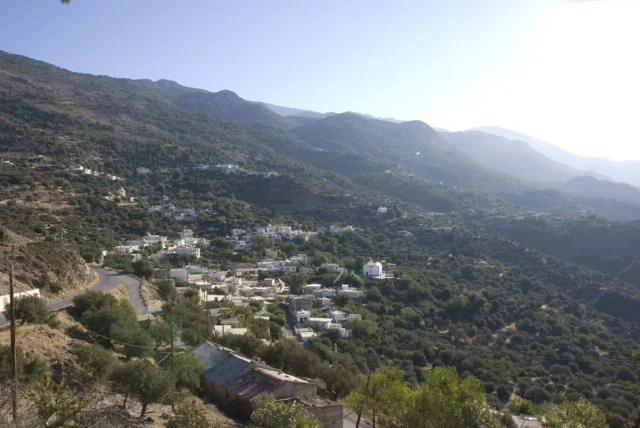




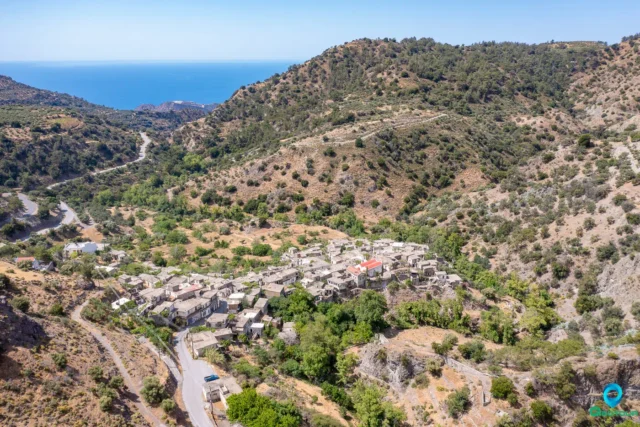

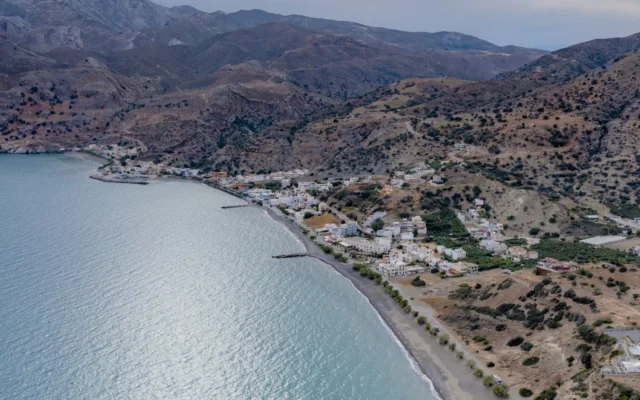
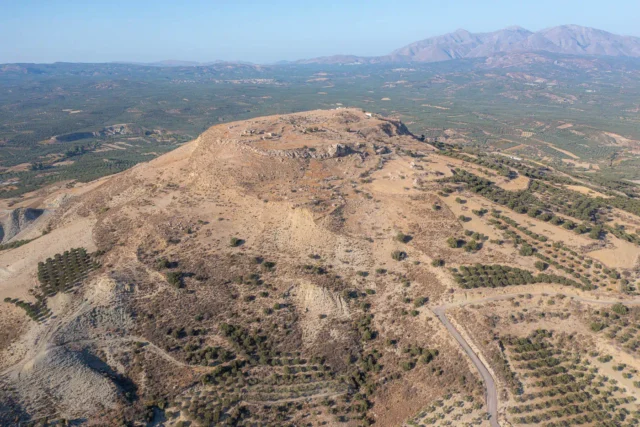
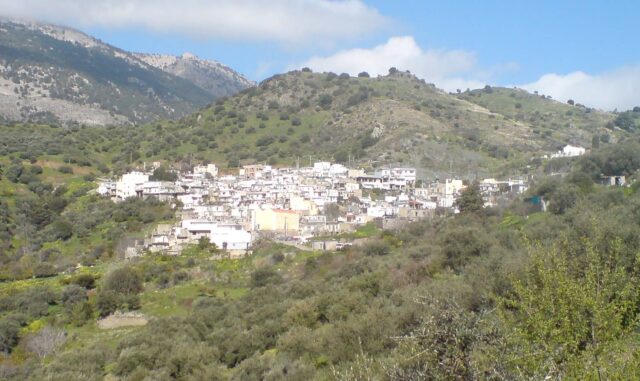

There are no comments yet.